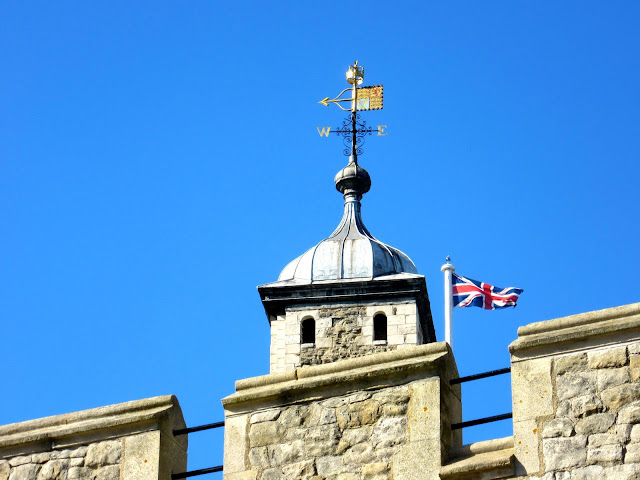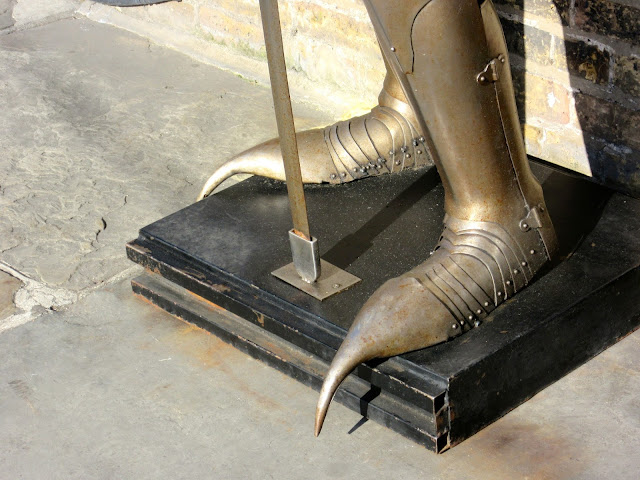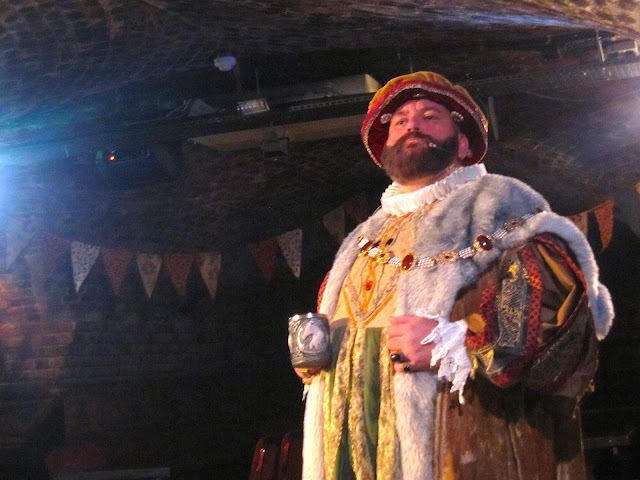Tower Bridge is one of London’s most famous
landmarks but it’s not as old as it appears. The bridge was built in the late
1800s and designed in keeping with its medieval neighbour, the Tower of London.
I got a closer look at the bridge while crossing the River Thames to visit the
Tower, the oldest of Her Majesty’s Historic Royal Palaces and a UNESCO World
Heritage Site.
 |
| Tower of London Yeoman Warder |
 |
| The Tower of London |
I’d toured the Tower of London on my first trip to England (including the Crown Jewels in the Jewel House) but not the infamous White Tower which was undergoing restoration. Built in 1078 by William the Conqueror, the Norman fortress has served as a royal residence, a prison, home of The Royal Mint and a zoo.
An installation of wire
animals by Kendra Haste entitled Royal Beasts celebrates the exotic beasts that once lived at the
Tower of London. These animals include lions, elephants, and a polar bear that
fished in the River Thames (a gift from the Norwegian king in 1252). The Royal
Menagerie closed in the 1800s when the remaining animals were moved to
establish the London Zoo in Regents Park.
 |
| Polar Bear, by Kendra Haste (2010-11) |
There was more art in the White Tower in the form of Keeper, centrepiece of the Royal Armouries’ new Power House exhibition. The 1,200 kilogram dragon was constructed using objects representing the ten institutions which were housed in the Tower of London, including 2,000 gold and silver coins (The Royal Mint), 400 glass rubies (Jewel House) and 26 telescopes (Royal Observatory).
The White Tower also hosts The Line of
Kings, the world’s longest running attraction which has drawn visitors for over
300 years. The exhibition of royal armour includes a suit worn by King Henry
VIII.
The Royal Armouries Collection also features
an execution block and axe dating from 1746.
In keeping with the Tower of London’s royal
theme, we had plans to dine with the Tudor court of Henry VIII at the Medieval
Banquet in nearby St. Katharine Docks. We were delayed by a raised footbridge
as a large yacht entered the marina.
The Medieval Banquet takes place in the
vaulted cellars of Ivory House, the only original warehouse still standing in
St. Katharine Docks. The theatrical dinner experience features minstrels,
contortionists, sword fighting knights and, of course, the portly king.
Dinner includes soup, roasted chicken, potatoes, vegetables and fruit pie, plus red wine or ale. And I discovered that the Medieval Banquet isn’t just for tourists. The diners at our table included local honeymooners and a couple celebrating their anniversary.
I first learned of the Medieval Banquet
from Rick Steves’ London guide book. As one of his readers I got a 15% discount
on the £50 ticket price. (Unfortunately this offer’s no longer available.) For more
information and bookings, visit the Medieval Banquet web site.
After dinner we boarded a Thames Clipper riverboat
at Tower Pier for a twilight cruise to Westminster Bridge where we caught a bus
to our hotel.
In the morning we would be heading out of London once again to a place on my bucket list, Downton Abbey’s Highclere Castle.
My Tip for the Day:
Readers of Rick Steves’ European travel guides
can benefit from special offers and discounts.
Next: A Very Downton Day
































No comments:
Post a Comment
All comments are moderated.
Note: only a member of this blog may post a comment.